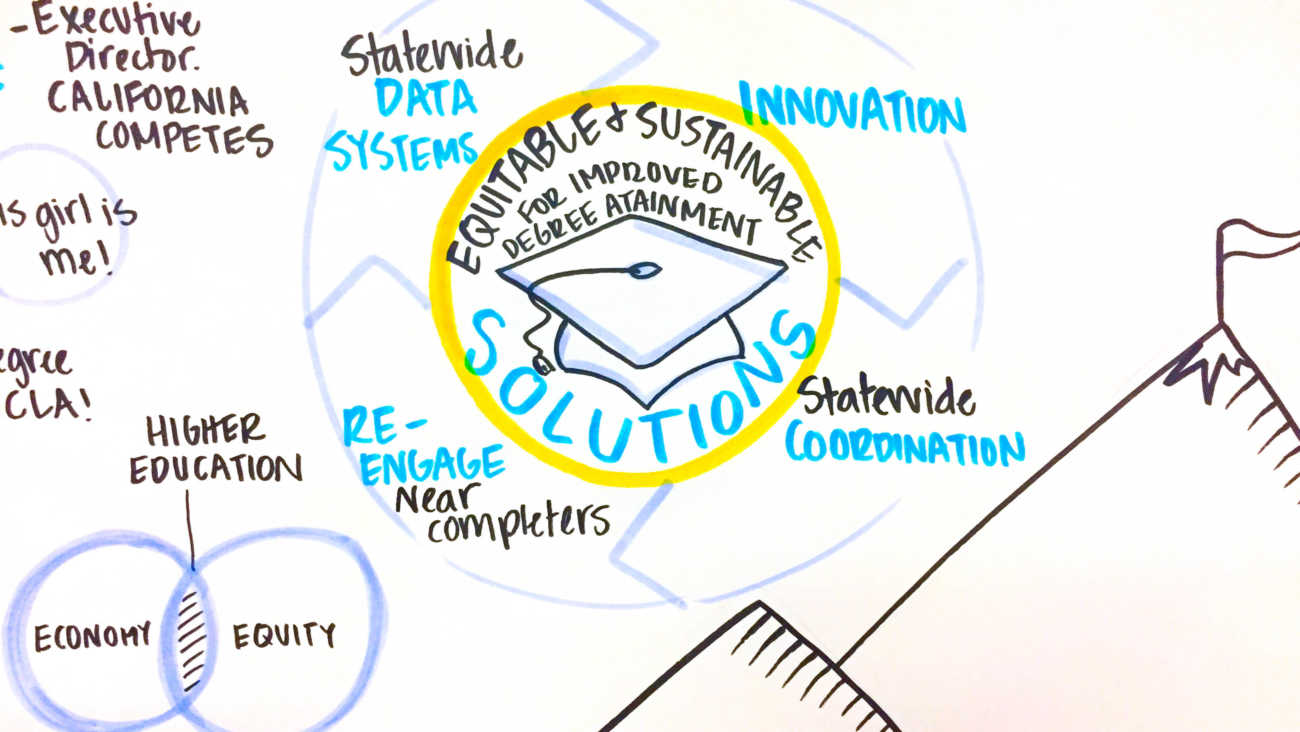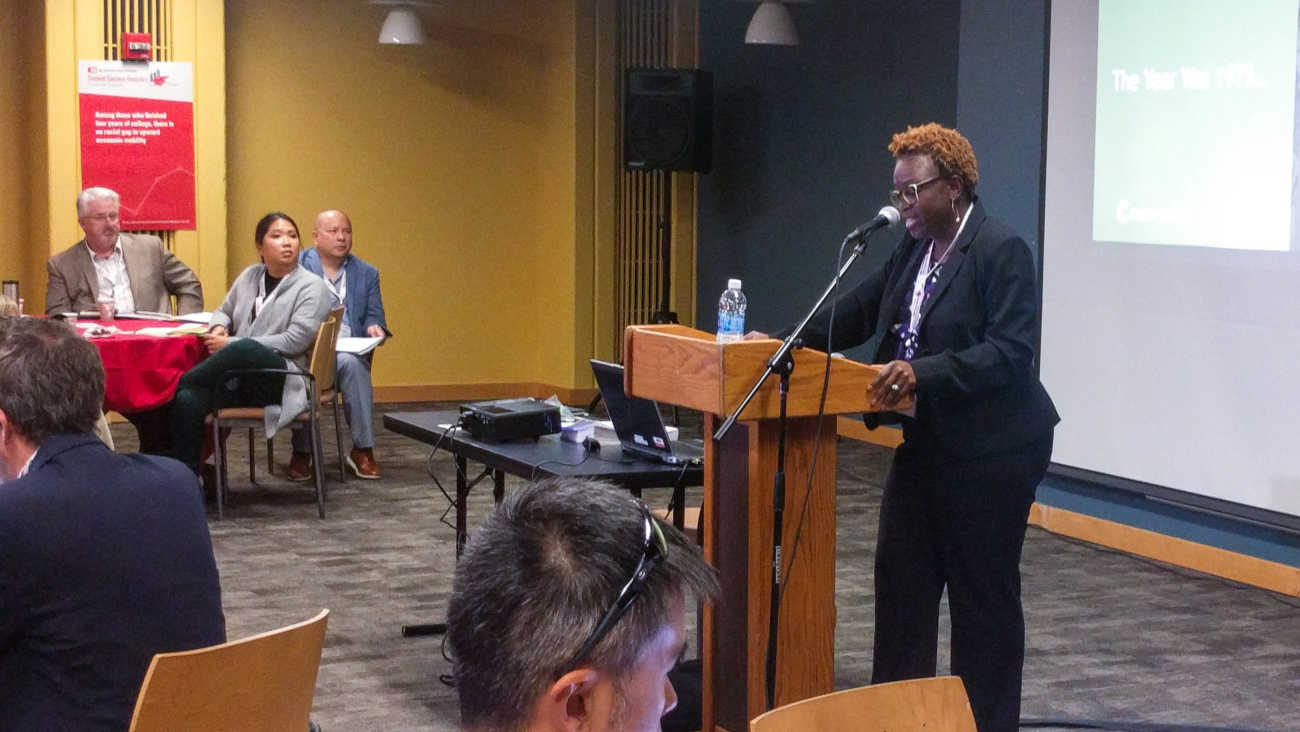How Better Data Can Help Colleges Re-engage Those Who Leave Without a Degree

Graphic recording of Lande Ajose’s presentation at CSU East Bay
“Every number is a student, and every student has a story.”
Nele Hempel-Lamer, director of the CSU’s new Certificate Program in Student Success Analytics, offered this insight in her welcoming remarks at a recent convening at which we were invited to speak. It was an important reminder to those in the room who were starting on a pilot program to learn new skills in using predictive analytics to better serve students that the data they are looking at have a rich context that surrounds them. As the faculty and staff members from CSU East Bay and San Francisco State discussed current practices and issues in using student data, it was clear that there is a lot of innovation happening on the ground as well as a lot of room for improvement in the quality and breadth of the data that are collected.
Whichever way you choose to look at the data, there is a large population of adults that are ripe for outreach to be brought back into the fold of higher education…
As we discussed where California stands in closing the degree gap and what role the CSU specifically has in closing that gap, we looked at the large number of Californians in the workforce who have not completed college. There are many ways that this number can be cut: 2.5 million Californians aged 25-34 are in the workforce with only a high school diploma. 5.6 million adults over the age of 25 started college but never finished. Whichever way you choose to look at the data, there is a large population of adults that are ripe for outreach to be brought back into the fold of higher education, if they are going to keep pace with the increasing demand for degrees and credentials in California’s economy.

Lande Ajose presenting at CSU East Bay on February 2, 2018
Participants in the room gasped at these data. They asked very insightful questions about how we track the students who have left college before completing, what the mechanisms are for letting them know that they only need a few more classes to complete a degree, or that they may have already completed a degree and just need to declare it. Unfortunately, there are no easy answers to their questions. The reality is that our data systems currently make it difficult to track students when they move across institutional boundaries. When a student leaves a CSU and then re-enrolls for a semester at a community college but leaves again just short of completing an associate’s degree, there is not a system for the institutions to combine their records to complete a degree audit, and it’s not clear who would be responsible for reaching out to the student to invite them back.
This seemingly simple dilemma highlights the need for three of California Competes’ policy priorities.
First, we need strategies for re-engaging students with some college but no degree and helping them toward completion. We could close a significant portion of the degree and credential gap by helping them toward completion. Second, we need an integrated data system that spans all of California’s higher education system. Finally, none of these strategies or data systems will be possible without a coordinating entity that spans all three segments of California’s higher education system.
Moving policy on all of three of these fronts can ensure that there are systems and processes in place to empower faculty and staff to have and utilize the data they need to create more positive stories behind their data.